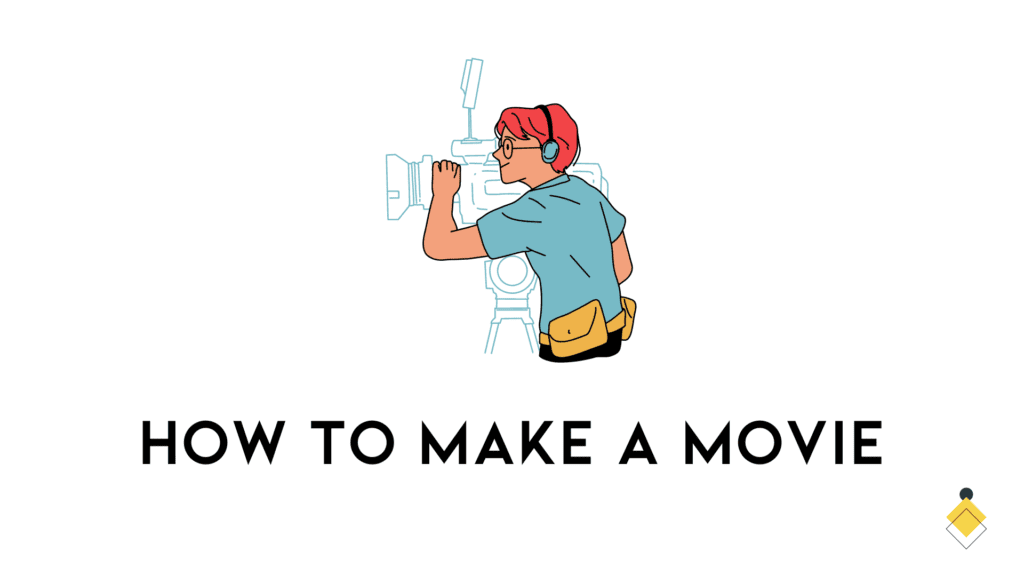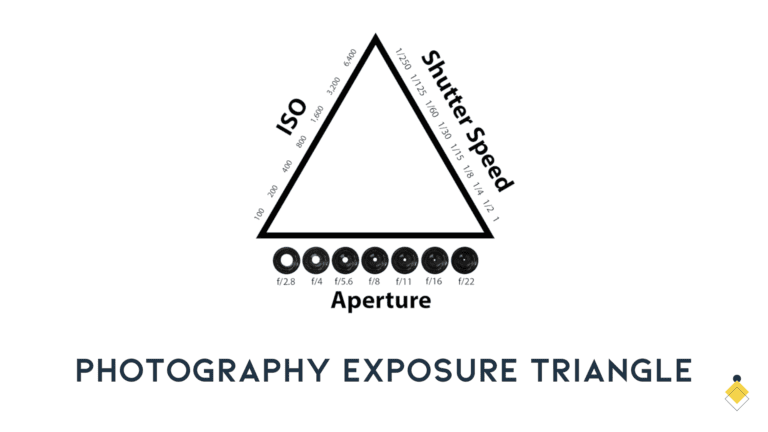Making a movie can seem like a daunting task, but with the right preparation and team, it is very achievable. From our experience, anyone with dedication and passion can make a quality film. The key is having a structured plan and checklist to follow. Here we break down the movie making process step-by-step to help you create the movie you’ve always dreamed of.
The most important first step is deciding what kind of movie you want to make. This will inform each subsequent decision in the production.
Here are some key questions to ask yourself:
- What genre interests you most – comedy, drama, horror, sci-fi, etc?
- Do you want to make a narrative film or documentary?
- What is the basic storyline or subject matter you want to cover?
- Is there a specific message or theme you want to convey?
- What tone or style fits this idea best – lighthearted, gritty, fantastical etc?
Once you have a clear vision in mind, the real planning can begin. From our experience, having a comprehensive pre-production plan is the key to an organized shoot and successful film.
Pre-Production: The Planning Stage
This phase involves taking your initial idea and transforming it into a feasible plan for production. Thorough pre-production covers all the key elements below.
Write a Screenplay
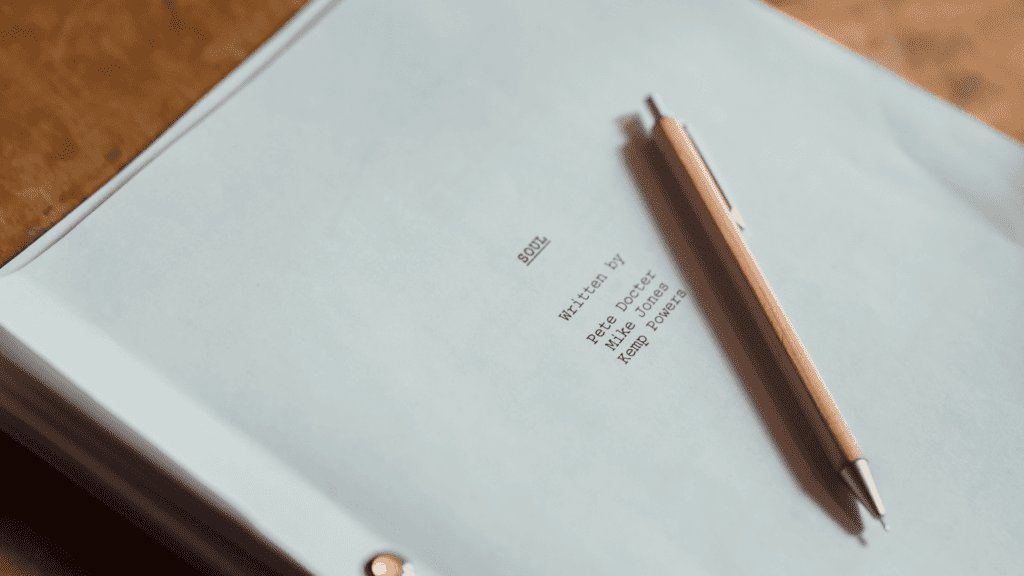
The screenplay acts as your guide throughout the entire process. Even if making a documentary, you’ll want some sort of detailed outline to follow.
Focus on nailing down the narrative arc, scenes, dialogue, characters and overall structure. Be open to reworking it as needed when you start actual production.
How long does it take to write a screenplay?
For your first screenplay, plan on at least 1-2 months of writing and revising to develop a solid final draft. Experienced screenwriters can often draft a script much faster.
Create a Storyboard
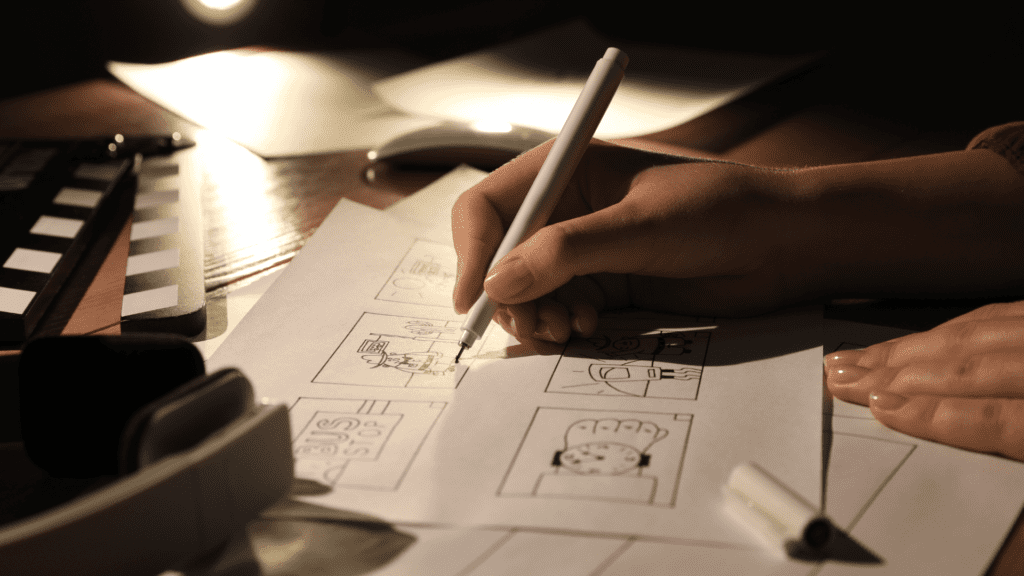
A storyboard is a visual sequence of each scene sketched out like a comic book. This helps you envision how to translate each script element to the screen before production starts.
It also allows your crew to understand your vision and know what needs to be filmed. Storyboards can be simple stick figure sketches or more detailed drawings.
Secure Locations
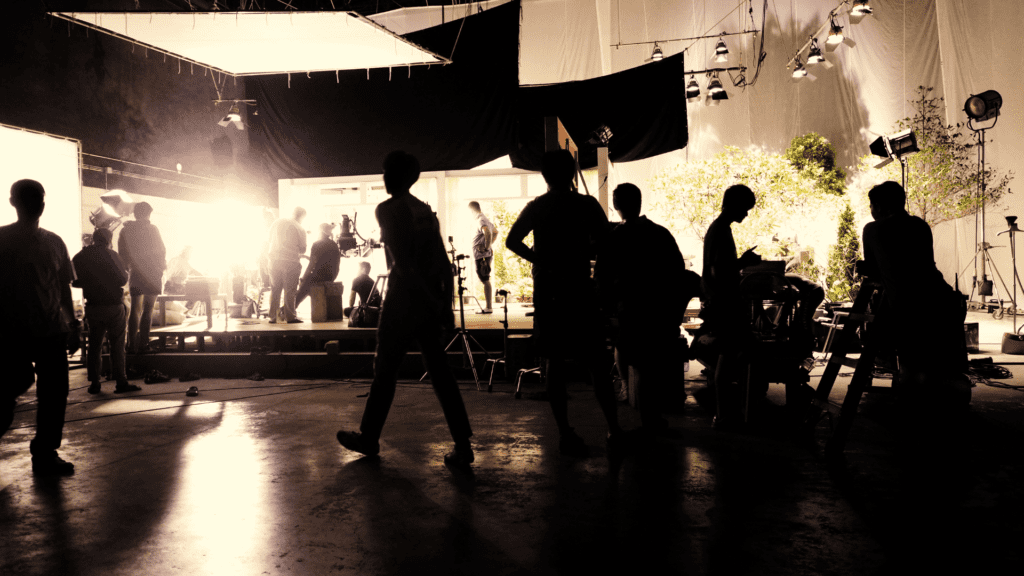
Scout and confirm all the locations where you plan to film – whether interiors at a house or business, or exteriors around town.
Make sure you will have access to electrical outlets and bathrooms if needed. Get any necessary permits or permission slips.
Set a Budget

Add up all the expenses you expect to incur:
- Equipment rentals
- Props/costumes/makeup
- Crew wages
- Food/refreshments
- Transportation
- Permits/location fees
- Post-production costs
Then look for ways to secure financing through grants, crowdfunding, investors or your own savings. Set thresholds for minimum and ideal budgets.
Build a Crew
Consider what key roles you need to fill and who is suited for each:
- Director – leads the creative vision and manages the cast and crew
- Assistant Director – supports the director, keeps everyone on schedule
- Director of Photography – oversees camera angles, lighting and framing
- Camera Operator – operates camera equipment during filming
- Sound Mixer – monitors and captures clear audio
- Gaffer – sets up lighting design and equipment
- Production Designer – finds optimal shooting locations and designs sets
- Makeup Artist
- Script Supervisor – ensures continuity between scenes
- Cast – the on-screen actors
Recruit people you know or look for film professionals available for hire. Hold auditions for cast members as needed.
How many people does it take to make a movie?
The size of a film crew can range from just 2-3 people for ultra low-budget films all the way up to hundreds on a major Hollywood production. Gauge how many hands you’ll need based on your specific needs.
Rent Equipment

Make a list of all the camera, lighting, audio and grip gear you’ll require. Look for affordable rentals from specialty shops tailored to indie filmmakers. Test your equipment before shooting.
The basics include:
- Camera – DSLR or mirrorless cameras offer an affordable option. Invest in additional lenses.
- Tripod – Essential for stabilizing stationary shots.
- Lighting – At minimum, have a key light, fill light and back light.
- Microphones – Shotgun mic for general audio, lavalier mics for dialogue.
- Accessories – ND filters, gels, reflectors, clamps, cables, external audio recorder etc.
Secure Props, Costumes and Locations
Collect any props, costumes and special effects elements needed to portray your script. Scout your locations again and decide where each scene will unfold.
Handle any paperwork for permits or location releases. Do a tech check at key sites.
Shot list and Storyboards

With your DP, create detailed shot lists to plan out every scene camera-wise and compile matching storyboards.
This provides a blueprint for the crew to follow each day. Make copies for all.
Production: Lights, Camera, Action

This is when you finally get to bring your vision to life and capture it on camera. Stay calm, flexible and focused to maximize production.
Set a Shooting Schedule
Mapping out a detailed filming schedule helps everything run smoothly, with contingency days built in.
- Prep days – Cast rehearsals, table reads, blocking, tech checks
- Principal Photography – The main shoot days
- Pick-ups/Reshoots – Any additional filming as needed
Aim to group scenes by location proximity and production needs to maximize efficiency.
How long does it take to make a movie?
The length of the filming schedule is determined by the length of your script and production scale. Most feature films take 2-3 months to shoot. Micro-budget films can be shot in 1-2 weeks.
Take Notes During Filming
Have your script supervisor meticulously log details of each take – like scene number, shot type, take number, and any errors or oddities. This ensures coverage options in editing.
Stay Organized On Set
A hectic set will sabotage your schedule. Maintain order by:
- Starting on time each day
- Enforcing constant radio contact between crew members
- Keeping gear properly maintained and stored
- Labeling tapes/cards appropriately as they’re filled
- Securing location releases/permits on hand
- Distributing call sheets, schedules, storyboards etc
- Providing sufficient food, water and breaks
Direct With Care
Set the mood by staying calm and focused. Have an open dialogue with actors about their motivations. Be decisive but willing to hear input. Say a quick speech to inspire the cast and crew before each day.
Follow Protocol For Each Shot Setup
- DP and gaffer set up lighting
- Grips put camera in position
- 1st Assistant Camera prepares the camera settings
- Director & DP finalize framing and composition
- Camera Operator follows focus puller’s marks during takes
- Sound is rolled, then camera, and slate is clapped
- The director calls “Action!”
- Take plays out, director yells “Cut” when finished
- Process is repeated until director is satisfied
Having a system like this keeps things moving smoothly from shot to shot.
How many takes should you do?
Plan on doing an average of 3-5 takes per shot setup to ensure you get a great performance on camera while also having options. Be willing to go for more takes if needed for trickier, more nuanced scenes.
Pay Attention to Sound
Bad sound can ruin an otherwise great film. Monitor levels diligently, especially on wide shots using boom mics. Have actors project and enunciate clearly. If needed, enhance sound in post with ADR (Automated Dialogue Replacement).
Shoot B-Roll, Pickups and Cutaways
Capture supplemental footage that can help with editing transitions and continuity:
- B-roll – shots of the environment, details, inserts etc. This “wallpaper” disguises jump cuts between takes.
- Pickups – any shots you missed or want redone with better quality
- Cutaways – quick shots of objects or actions related to the scene. Use these to mask awkward edits.
Wrap Each Day
- Make sure all footage is backed up and organized
- Lock up gear and location thoroughly
- Review schedule and prep for tomorrow
- Address any issues that came up
- Let cast and crew rest!
Post-Production: Finishing the Film
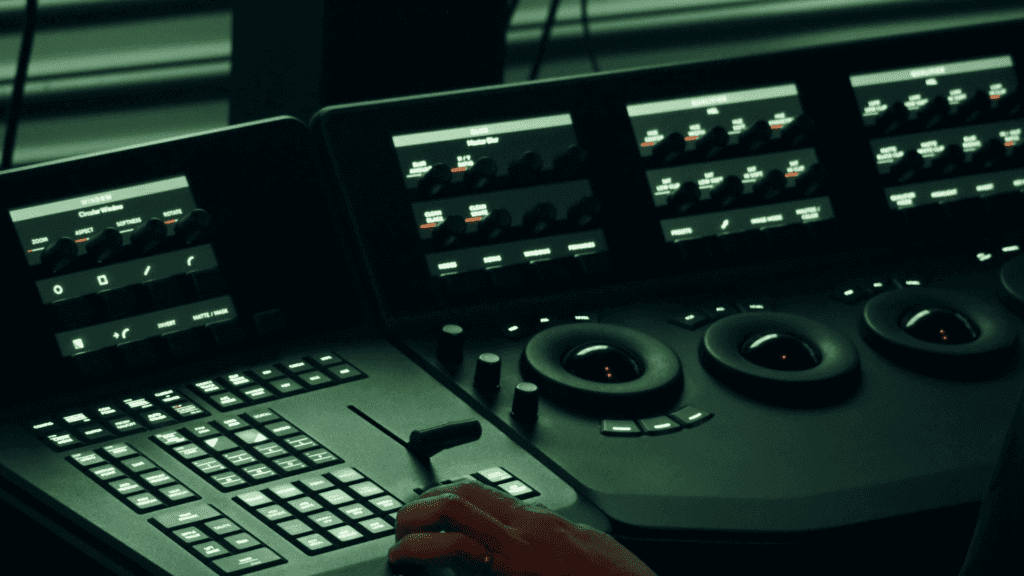
Now for the equally important process of turning your raw footage into a polished final film through editing, sound design, visual effects and more.
Create an Editing Workflow
- Backup all footage to an external hard drive and cloud storage
- Organize files into folders by scene and take
- View and tag the best clips with your editor
- Construct a timeline working scene-by-scene
- Refine the edit until you achieve the desired pacing and transitions
How long does editing take?
In general, plan on 1-2 months for editing a feature and 1-2 weeks for a short film. Factor in more time for heavy VFX.
Enhance the Visuals
With your colorist, grade the footage to achieve the intended look using:
- Primary color correction – adjusting overall brightness, contrast and colors
- Secondary color correction – isolating specific elements to refine independently
- Adding stylistic filters or effects like grain or vignettes
Then handle any needed visual effects, like CGI, sky replacement, muzzle flashes etc.
Polish the Sound
Your sound designer will clean up the audio and enhance it where needed:
- Fix inconsistencies through ADR or room tone patches
- Add sound effects like footsteps or props being handled
- Include compelling music that accents the story’s mood
- Balance all audio elements in the final sound mix
Export Your Movie
When picture is locked and audio is approved, export the film in its delivery format based on where people will watch it – online, festivals, screening events etc. Common export options include:
- ProRes – high quality master file for further editing
- H.264 – standard for online streaming and sharing
- DCP – required for theatrical screenings
Screen and Celebrate!
Hold a premiere screening for cast, crew and supporters. Enter your finished film into festivals and competitions. Most importantly, enjoy watching your creative vision brought to life on the big screen!
Making a quality movie is certainly an intensive process, but also incredibly rewarding. Stay organized in pre-production, focused on set, and patient in post-production. Work with reliable collaborators who share your passion and vision. With this comprehensive guide to follow, you’ll be ready to make your movie shine from start to finish. So grab your camera, rally your team, and get filming!
FAQ – How to Make a Movie
Making a movie is a massive undertaking, but with the right preparation and understanding of the filmmaking process, you can create your own film. You need to start by developing your idea into a compelling story. This includes creating interesting characters, a solid plot, and a satisfying structure. Everything you need to know to accomplish this can be learned from resources like film school, tutorials, and books on filmmaking.
The kind of movie you want to make determines the right equipment you will require for your new project. This might range from a camera phone for a short movie to high-quality cameras and sound equipment for a feature film. Besides the camera, you will also need good sound equipment, lighting gear, and editing software like Adobe Premiere Pro or Final Cut Pro.
Proper planning is key to a successful filmmaking process. This includes doing a storyboard, creating a shot list for every scene, considering each camera angle, and deciding between wide shot or close-ups. Also, you should plan the locations for each scene, whether they are actual locations or sets that will need to be created.
A storyboard is an essential filmmaking tool that filmmakers use to visualize the shots in their movie before actual filming begins. It aids in determining the sequence of scenes, camera angles, and motion of characters. Many filmmakers draw storyboards as a way of “pre-visualizing” their movie, although there are also software options available.
This depends on the kind of movie you want to make. For a short film, you might do most of the work yourself or with a few friends. For a feature film, you will likely need a larger team. Key positions include the director, producer, cinematographer, sound mixer, and editor. Networking, film school, or filmmaking communities can be good places to find people interested in making movies.
Yes, you can start learning about the editing process using simple software like Windows Movie Maker. But for a professional-looking finished film, more sophisticated software like Adobe Premiere Pro, Final Cut Pro, or other professional editing software are recommended. They provide more editing tools and options and can handle a higher quality video format.
A rough cut is the initial edit of your movie. It sets the structure of the film but may not include all sound effects, music, or special effects. The final cut, on the other hand, is the completed movie that is ready for distribution. It has been fine-tuned with all the elements in place, including sound, music, special effects, color correction and more.
